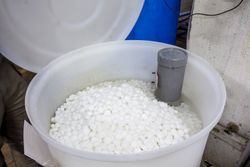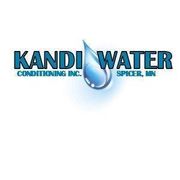How Can You Maintain Your Water Softener?

If you recently had a water softener installed, you’re already enjoying benefits such as cleaner dishware, softer skin, shinier hair, and brighter clothes. Hard water not only dulls skin, hair, clothes, and silverware, but it also leaves mineral deposits around fixtures and contributes to plumbing clogs. Here, review tips for maintaining your water softening device to sidestep hard water issues for as long as you own your home.
What Do I Need to Know About Water Heater Maintenance?
The Salt Factor
Water softeners typically use either sodium chloride or potassium chloride, which are two types of salt, to create ion exchanges that remove magnesium and calcium. Sodium ions replace calcium and magnesium ions to avoid hard water damage. And while salt-free devices eliminate calcium from hard water, they have no impact on magnesium ions.
Add salt to your water softening system’s brine tank, or the component that stores salt to produce the solution that maintains the ion exchange process. How often you have to add salt depends on the tank’s size, the amount of water your household uses daily, and the hardness of the water in your community. The information on the system’s valve control panel also provides assistance in determining salt applications.
Salt can solidify to create “bridges” in your water softener that prevent efficient ion exchanges. If you notice bridging issues, pour hot water over the mass to break it up. You can also use a large, clean stick to dislodge the bridge.
The Resin Bead Factor
 Water softeners also contain resin bead beds for ion exchange purposes. The liquid flows over these beads where hard calcium and magnesium ions get replaced by soft sodium ions. As you use the water softening device, the beads become dirty with silt, iron, and heavy metals, among other organic compounds, resulting in efficiency loss and hard water.
Water softeners also contain resin bead beds for ion exchange purposes. The liquid flows over these beads where hard calcium and magnesium ions get replaced by soft sodium ions. As you use the water softening device, the beads become dirty with silt, iron, and heavy metals, among other organic compounds, resulting in efficiency loss and hard water.
Flush the resin beads according to your manufacturer’s instructions using a recommended cleaner to eliminate impurities. Pour the cleaner into the brine instead of the salt tank to avoid polluting the sodium or potassium chloride, and immediately switch the softener to “regeneration mode” for deep cleaning that also ensures the discharge of the cleanser. Do this about every six months for the best results.
Water softener systems form the foundation of Kandi Water Conditioning, Inc. The company known for quality products has served Kandiyohi County, MN, and the surrounding counties since 1995, providing iron filtration and reverse osmosis in addition to water softener services. Call the H20 professionals today at (320) 796-6020 to schedule a free assessment or visit the website for product details. Learn more about water filtration on Facebook.
About the Business
Have a question? Ask the experts!
Send your question

